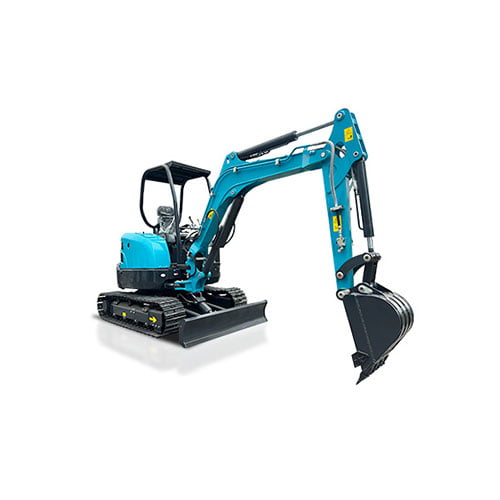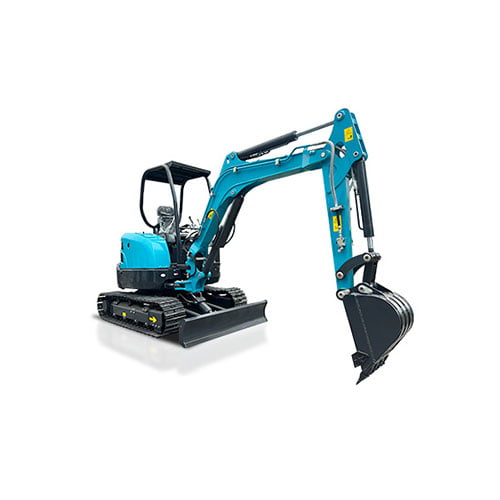Introduction
Mini excavators are invaluable tools in the construction and landscaping industries, prized for their versatility, compact size, and ability to navigate tight spaces. However, the performance and efficiency of a mini excavator largely depend on the quality of its tracks. High-quality mini excavator tracks can significantly enhance the machine’s capability, providing better traction, stability, and durability. This comprehensive guide will explore how quality mini excavator tracks can improve efficiency, examining the types of tracks available, their maintenance, and practical tips for maximizing their performance. By the end of this article, you’ll understand the critical role that mini excavator tracks play and how to choose and maintain them for optimal efficiency.
Understanding Mini Excavator Tracks

What Are Mini Excavator Tracks?
Mini excavator tracks are the continuous, looped bands that encircle the undercarriage of a mini excavator, allowing it to move. These tracks can be made from various materials, including rubber and steel, each suited to different types of terrains and tasks.
Types of Mini Excavator Tracks
Rubber Tracks: Ideal for landscaping and residential projects due to their flexibility and reduced surface damage.
Steel Tracks: Preferred for heavy-duty construction sites with rough and abrasive surfaces, offering durability and strength.
Hybrid Tracks: Combine the benefits of both rubber and steel, providing versatility for a range of applications.
Importance of Quality Tracks
High-quality mini excavator tracks offer several advantages:
- Enhanced Traction: Prevents slippage and ensures smooth movement on various surfaces.
- Increased Stability: Reduces the risk of tipping over, especially on uneven terrains.
- Durability: Longer lifespan reduces the frequency of replacements and maintenance costs.
- Improved Efficiency: Maximizes the excavator’s performance, leading to faster project completion and reduced downtime.
Types of Mini Excavator Tracks
Rubber Tracks
Rubber tracks are commonly used for mini excavators due to their flexibility and suitability for a variety of surfaces, including soft ground, pavements, and grass. They are designed to minimize damage to the surfaces they travel on, making them ideal for landscaping and residential construction.
Benefits of Rubber Tracks
- Versatility: Suitable for a wide range of applications.
- Surface Protection: Minimizes damage to finished surfaces.
- Quiet Operation: Produces less noise compared to steel tracks.
- Comfort: Provides a smoother ride, reducing operator fatigue.
Steel Tracks
Steel tracks are preferred for more demanding applications, such as heavy construction and demolition, where durability and strength are paramount. They are designed to withstand harsh conditions and rough terrains, offering superior traction and longevity.
Benefits of Steel Tracks
- Durability: Withstands harsh environments and heavy use.
- Traction: Provides excellent grip on rough and uneven surfaces.
- Stability: Ensures stability on rugged terrains.
- Longevity: Longer lifespan compared to rubber tracks under heavy-duty conditions.
Hybrid Tracks
Hybrid tracks combine the benefits of both rubber and steel tracks, providing versatility for a range of applications. They are designed to offer the durability and strength of steel tracks while maintaining the flexibility and surface protection of rubber tracks.
Benefits of Hybrid Tracks
- Flexibility: Adaptable to various terrains and conditions.
- Durability and Strength: Combines the best features of both rubber and steel.
- Versatility: Suitable for diverse applications.
- Cost-Effectiveness: Reduces the need for multiple types of tracks.
Table: Comparison of Mini Excavator Track Types
| Track Type | Durability | Traction | Surface Protection | Noise Level | Ideal Use Case |
|---|---|---|---|---|---|
| Rubber | Moderate | Good | High | Low | Landscaping, residential projects |
| Steel | High | Excellent | Low | High | Heavy construction, demolition |
| Hybrid | High | Very Good | Moderate | Moderate | Versatile applications |
Maintenance of Mini Excavator Tracks
Importance of Regular Maintenance
Regular maintenance of mini excavator tracks is crucial to ensure their longevity and optimal performance. Proper maintenance helps prevent premature wear and tear, reduces downtime, and saves costs associated with frequent replacements.
Daily Maintenance Tips
- Inspection: Check for signs of wear, damage, or foreign objects lodged in the tracks.
- Cleaning: Remove dirt, debris, and other materials that can cause damage or reduce traction.
- Tension Adjustment: Ensure the tracks are properly tensioned to prevent slippage and excessive wear.
- Lubrication: Lubricate moving parts to reduce friction and wear.
Long-Term Maintenance Tips
- Periodic Replacement: Replace tracks when they show significant wear or damage to avoid operational issues.
- Professional Servicing: Schedule regular professional inspections and servicing to identify and address potential problems early.
- Storage: Store the mini excavator in a dry, sheltered area to protect the tracks from environmental damage.
Enhancing Efficiency with Quality Mini Excavator Tracks

Choosing the Right Tracks
Selecting the right tracks for your mini excavator is crucial for maximizing efficiency. Consider the following factors:
- Terrain: Choose tracks suited to the primary surfaces you’ll be working on.
- Application: Match the track type to the specific tasks and conditions of your projects.
- Budget: Balance the initial cost with the long-term benefits of durability and performance.
Benefits of High-Quality Tracks
High-quality mini excavator tracks can significantly enhance efficiency by:
- Reducing Downtime: Durable tracks require fewer replacements and repairs, minimizing downtime.
- Increasing Productivity: Improved traction and stability allow for faster and more precise operations.
- Lowering Operating Costs: Quality tracks reduce maintenance and replacement costs over time.
- Enhancing Safety: Better stability and control reduce the risk of accidents and injuries.
Operator Training
Proper operator training is essential to maximize the efficiency and lifespan of mini excavator tracks. Ensure operators are trained on:
- Proper Use: Understanding how to operate the machine effectively without causing unnecessary wear on the tracks.
- Maintenance Practices: Regular maintenance routines and how to identify potential issues.
- Terrain Navigation: Techniques for navigating different terrains to reduce track stress and damage.
Conclusion
Quality mini excavator tracks are critical for enhancing the performance, efficiency, and longevity of your machine. By choosing the right tracks, maintaining them properly, and ensuring operator proficiency, you can maximize the benefits of your mini excavator. Investing in high-quality tracks not only improves operational efficiency but also contributes to safer and more cost-effective project completion.
FAQ
What are the main types of mini excavator tracks?
The main types of mini excavator tracks are rubber tracks, steel tracks, and hybrid tracks. Each type offers unique benefits and is suited to different applications and terrains.
How do I choose the right mini excavator tracks for my needs?
Consider the primary terrain, specific tasks, and budget when choosing mini excavator tracks. Rubber tracks are ideal for soft surfaces and residential projects, steel tracks for heavy-duty construction, and hybrid tracks for versatile applications.
How often should I replace mini excavator tracks?
The frequency of track replacement depends on usage and maintenance. Regularly inspect tracks for wear and damage, and replace them when they show significant signs of deterioration to avoid operational issues.
What maintenance practices are essential for mini excavator tracks?
Regular maintenance practices include daily inspections, cleaning, tension adjustment, lubrication, and periodic professional servicing. Proper maintenance ensures the longevity and optimal performance of the tracks.
How can quality mini excavator tracks improve efficiency?
High-quality mini excavator tracks improve efficiency by reducing downtime, increasing productivity, lowering operating costs, and enhancing safety. Durable tracks require fewer replacements and repairs, allowing for more consistent and precise operations.




